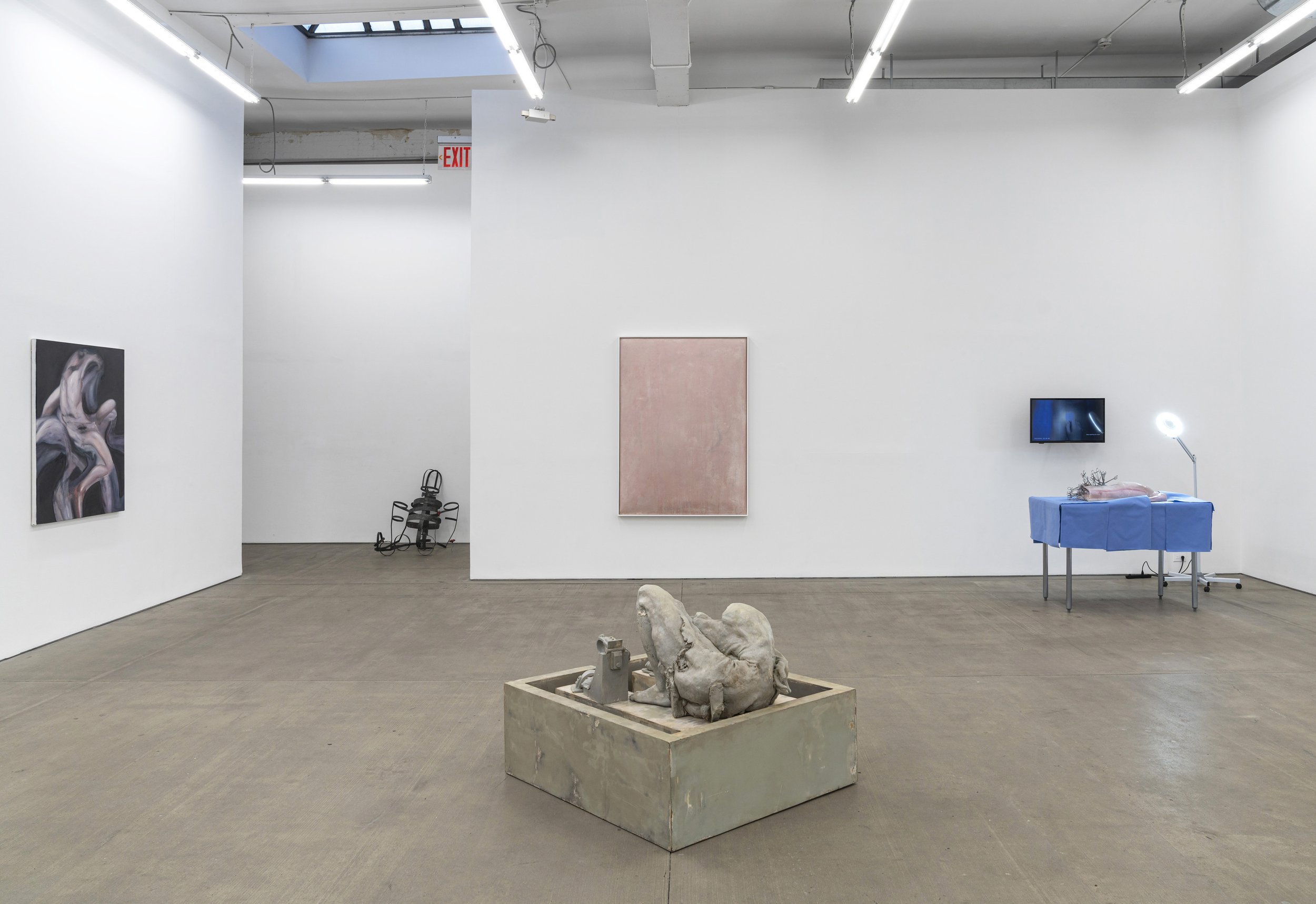THE SUM OF OUR PARTS
Featuring : Zoe Alameda, Dana - Fiona Armour, Patricia Ayres, Gina Beavers, Skuja Braden, Amy Bravo, Debra Cartwright, Claire Chey, Angela Conant, Christa Joo Hyun D’Angelo, Natalia Giraldo, Shana Hoehn, Sonia Jia, Dew Kim, Kajin Kim, Luis Enrique Zela- Koort, Preslav Kostov, Jens Kothe, Josefina Labourt, Keunmin Lee, Santiago Licata, Lionel Maunz, Jeffrey Meris, Pol Morton, Anousha Payne, Agnes Questionmark, Kristin Reger, Rodrigo Ramírez Rodríguez, Jonathan Santoro, Loup Sarion, Grace Sachi Troxell, Derek Weisberg
May 4th - June 4th 2024
Installation Views.Ph. Cary Whittier
“The figure of the future, that which can only be surprising, that for which we are not prepared, you see, is heralded by species of monsters. A future that would not be monstrous would not be a future; it would already be a predictable, calculable, and programmable tomorrow. All experience open to the future is prepared or prepares itself to welcome the monstrous arrivant” - Jacques Derrida
Spanning between our gallery and thee booth at NADA New York, “The Sum Of Our Parts” gathers works that playfully, paradoxically and hauntingly deploy tropes from cyber-punk, eco-horror, science-fictional grotesque and post-human hallucinations, challenging the idea of the body as a fixed psychological and physical entity.
The exhibition aims to unveil how individual bodies never stop at the apparent boundary of the skin, but always tend to incorporate external objects and narratives into the self image, extending oneself prosthetically and linguistically. In addition to being both material and immaterial, as well as artificially extendable, the body is also sexed and gendered, with meanings and status of these as constructs of socio-cultural discourse, shaped by canons and relations of power shifting throughout history.
Jean Paul Sartre’s Being and Nothingness (1943), which delves into his complex phenomenological ontology of being, breaks down these states, in which individuals constantly fluctuate from being as in- itself, for- itself, for- others, and the alienated body. As much as we may try to remain authors of ourselves, or to achieve a sense of ‘wholeness’, this becomes subject to an unavoidable fragmentation between our self representations, and how we are perceived. Echoing Lacan’s “Mirror stage”, when the formation of the ego occurs and the myth of apparent wholeness shatters, an anxiety about fragmentation emerges, to counteract "images of castration, emasculation, mutilation, dismemberment, dislocation, evisceration, devouring, bursting open of the body".
Installation Views.Ph. Cary Whittier
Subsequently, the orgy of non-biodegradable synthetic materials surrounding us at the current and speculative level, forces all beings to ingest and assimilate non-organic materials. The result is a proliferation and saturation of plastic and silicone that, simultaneously unconsciously and intentionally, human bodies begin to inglobate, yielding scenarios for post-human and eco-terror anxieties manifesting in the works on view.
It suddenly becomes apparent how today’s environmental disruption is haunting humanity’s relationship to the non-human world, changing the relationship to and the conception of human bodies as well.
Through the exploration of alternative topographies and taxonomies of the body, these artists aim to challenge established cisheteronormative frameworks, envisioning an alternative ‘monstrosity’. As Derrida states, this becomes a possible future of greater hybridity and fluidity.
Keunmin Lee (b. 1982), Encounter in the Basement, 2024, Oil on Canvas, 38 x 57 in. /97 x 146 cm
Physically deconstructing and reimagining the notion of the body as a coherent, tangible, and fixed whole, these iconoclasts invite an alternative plurality, porosity, plasticity and mutability of the body. This practice of disarticulating and rearticulating the body becomes a form of defiance of any gendered or human identification, resigning its biomedical discourse of the body, sex and gender.
As a whole, this exhibition serves as a prophetic exercise, an uncanny reminder of the body’s permeability, and plasticity within the obsession of Western society’s hierarchical/binary categories (male, female, human, non-human). These fragmented, dismembered and recombined creations encapsulate the sentiment that once scientific advancements are taken into consideration, bodies today deconstruct and shatter the monolithic conceptions of identity.
Installation Views.Ph. Cary Whittier
Installation Views - Ph.Cary Whittier
Installation Views - Ph.Cary Whittier
Installation Views - Ph.Cary Whittier
Installation Views - Ph.Cary Whittier
Installation Views - Ph.Cary Whittier










